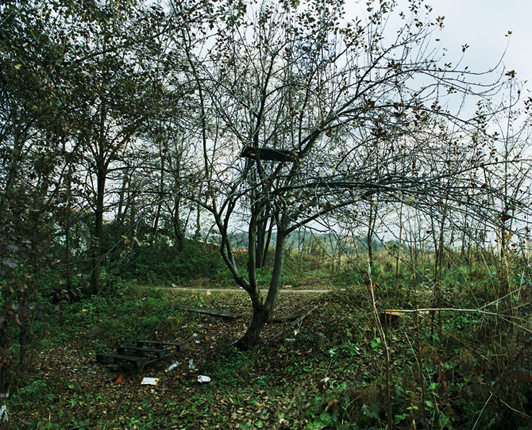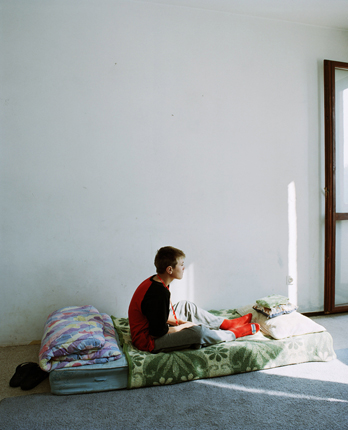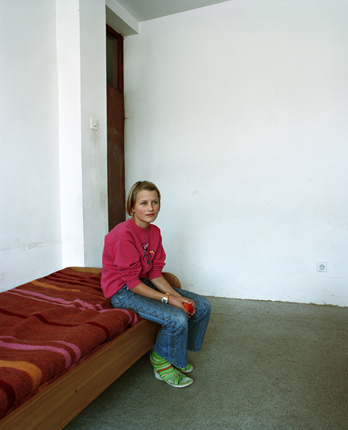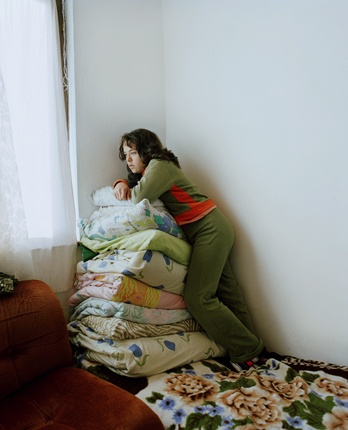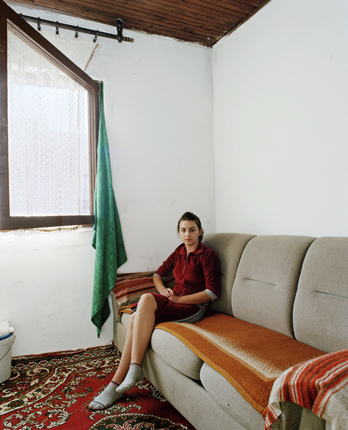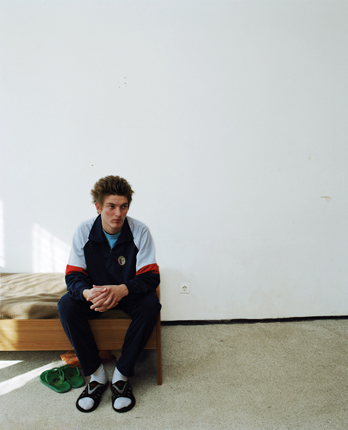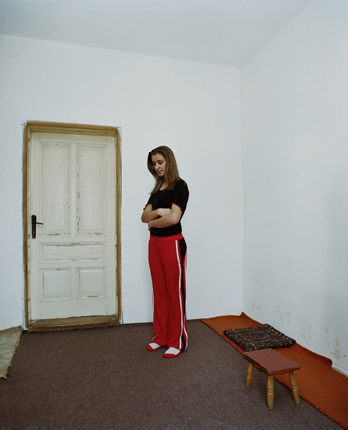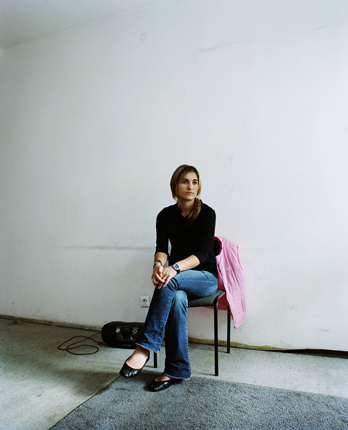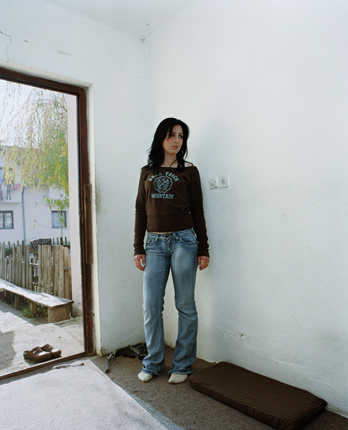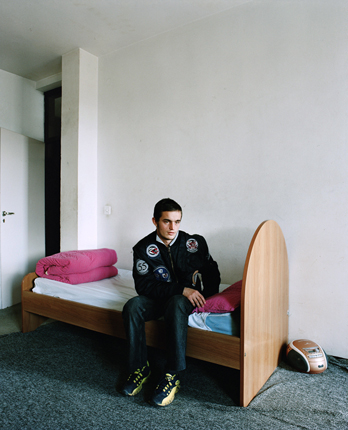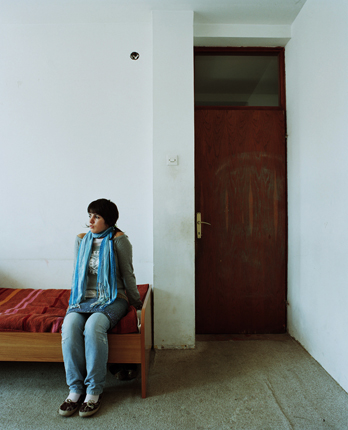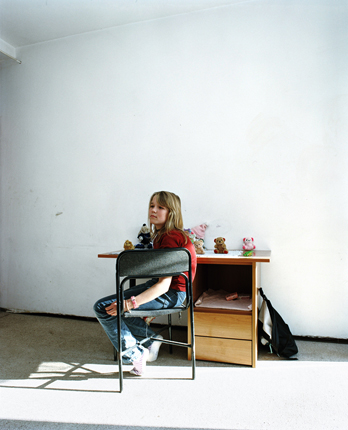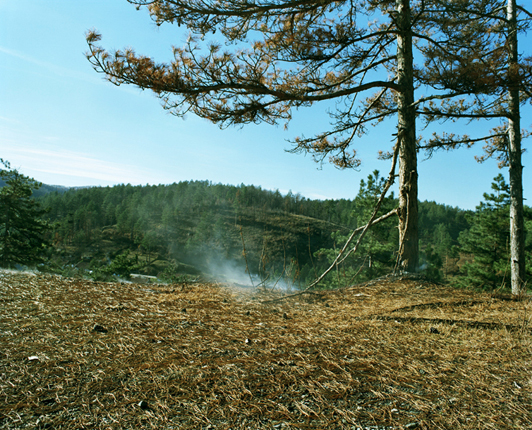My photography projects are about the different aspects of living conditions, evoked through political changing’s – for instance by war.
In 2001 I traveled to Bosnia-Herzegovina first time. I was deeply impressed of how people reacted to the disaster of war and the postwar pictures, so I decided to return back in Winter 2004/05 documenting daily life in refugee camps around Tuzla. The aim was to altercate with the living conditions ten years after the end of the war. This project I called Blood+Honey with respect to the meaning of Balkan by the Turkish. Blood+Honey marks the beginning of my artistic career. In 2007, I went back to Bosnia-Herzegovina to portrait adolescent girls and boys who live in refugee camps or orphanages, asking them about the past, their present and the thoughts about their future.
Text by Nathalie Mohadjer
Every war leaves traces, deep scars in the land and the people, visible and invisible.
Gerhard Richter, Note from 27.1.1983
The photographic portraits of Bosnian youths in refugee camps and orphanages made in their personal rooms point to historical wounds and the process of scarification.
But they also point to the future, to that which comes afterwards, which these kids are creating for themselves.
The photographs show young women and men in their current environments and with the few objects that they possess. The emptiness around them and the utter impossibility of their situations are however very present and emotionally charged. Past presents future – the title of this work expresses an aspect of time, which appears in this context to belong exclusively to the process of scarification. No longer and not in its entirety, the issue here is one of threshold such for these young people busy growing up. In this series, motifs of the threshold and borders appear over and over again. In every image there is a door, a window, a curtain or a carpet, which reminds of a different time and a different place and simultaneously obfuscates. Behind the closed door, hidden by a curtain or swept under the carpet – there is always something more. In this way the scar is a symbol for that thing that it hides.
Text by Antonia von Schöning
Photographs by Nathalie Mohadjer, Bosnia – Herzegovina 2007

